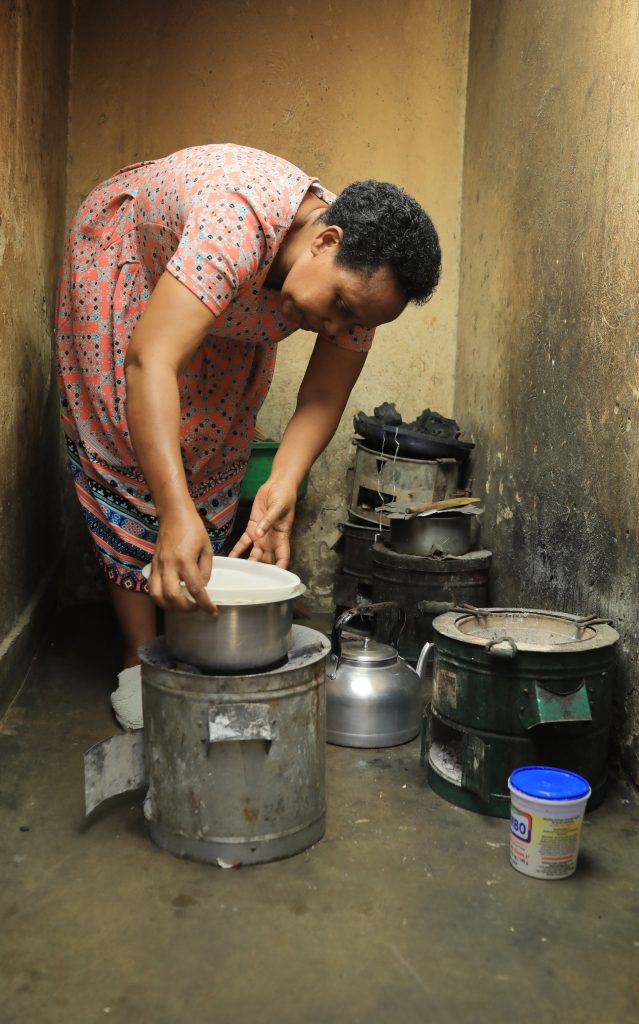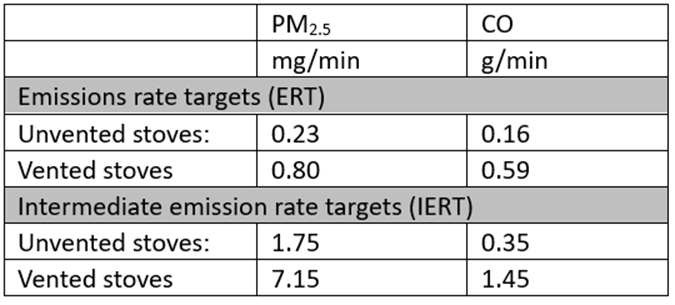
- Date
- 26th January 2024
- Categories
- Clean Cooking
By Dr Nigel Scott (Gamos Ltd.)
Defining what constitutes ‘clean’ cooking is a fundamental starting point in the design of any ‘clean cooking’ strategy. Somewhat surprisingly, despite all the international work and the guidelines, defining ‘clean’ is not straightforward.
In this blog we try to unpack some of the detail of the WHO guidelines that are commonly referred to in clean cooking transition strategies and are the basis of SDG target 7.1.2 (Proportion of population with primary reliance on clean fuels and technology).
It is important to make a distinction between the WHO Guidelines on air quality (WHO global air quality guidelines, 2021) and the guidelines on emission rates (WHO indoor air quality guidelines: household fuel combustion, 2014).
The air quality guidelines were first published in 2005 and gave targets for acceptable levels of pollutants that would minimise the risk of disease. These were updated in 2021 with lower targets. Targets are enumerated in terms of units of pollutants per cubic metre, e.g. µg/m3 for PM2.5.

The combustion guidelines then present guidelines for emission rates from cooking devices that should result in levels of pollutants within the household that do not exceed the air quality guidelines. Emission rates are enumerated in terms of units of pollutant emitted in a given time, e.g. mg/min.
Recommendation 1 in the WHO combustion guidelines gives the emission rate targets (ERT) for both PM2.5 and CO presented in Table 1*:

However, it is important to note what levels of air quality these are intended to achieve. The emission rate targets are framed as:
“What device and fuel emission rates are required to meet WHO (annual average) air quality guidelines and interim target-1 (IT-1) for PM2.5 and the (24-hour average) air quality guideline for CO?” (WHO Indoor air quality guidelines: household fuel combustion).
The air quality guidelines introduce interim targets which are explained as incremental steps for a progressive improvement in areas with high pollution. For example, the guideline target for PM2.5 is 5 µg/m3, but interim target 1 is 35 µg/m3 (this the first interim target to aim for, with the highest level of pollution). The air quality guidelines illustrate how achieving each of the interim targets will reduce the burden of disease associated with PM2.5, but they do not describe the basis on which the interim targets were set.
Note that the values of air quality targets given in the combustion guidelines are slightly different:
- Mean concentration over 1 year, PM2.5: 10 µg/m3
- interim target-1 (IT-1), mean concentration over 1 year, PM2.5: 35 µg/m3
- Mean concentration over 24 hour, CO: 7 mg/m3
This is because the combustion guidelines were published in 2014 when the air quality target for PM2.5 was 10 µg/m3 but this target was lowered to 5 µg/m3 in the revised air quality guidelines published in 2021. At the date of writing, the combustion guidelines have not been revised in the light of the revised air quality target.
Modelling is used to estimate the level of pollutant concentrations expected to result from a given rate of pollutant emission. The combustion guidelines describe the use of modelling to estimate that, given the emission rate targets (ERT) in Table 1, 90% of kitchens (with both vented and unvented stove) would comply with the target levels of pollution – for both PM2.5 and CO. 100% of kitchens would comply with the more relaxed interim target 1 level of PM2.5. The model takes into account duration of cooking (how long the stove is in use and emitting pollutants), kitchen size, and how well ventilated it is (air change rate). The WHO Performance Target model is freely available online.
The combustion guideline text goes on to introduce the idea of more relaxed intermediate emission rate targets (IERTs), estimated to result in 60% of households achieving both the interim target 1 level of PM2.5 (35 µg/m3) and the 24 hour mean concentration of CO (Table 2).

So, should we be aiming for targets or intermediate targets?
The combustion guidelines clearly acknowledge that some contexts, particularly in low income settings, will experience high levels of indoor air pollution and struggle to implement the technologies and fuels needed to achieve the air quality targets. In recognition of this, Recommendation 2 states:
“Governments and their implementing partners should develop strategies to accelerate efforts to meet these air quality guidelines ERTs (See Recommendation 1). Where intermediate steps are necessary, transition fuels and technologies that offer substantial health benefits should be prioritized.”
While not recommending the use of the interim emission rate targets in these intermediate steps, the combustion guidelines imply that there are circumstances in which they can play a role:
“Programmes promoting fuel/stove combinations for health should move toward the most stringent emissions level–the emissions target itself–over time….”
“Intermediate steps may be inevitable and appropriate to promote this transition to cleaner energy”.
The question is specifically addressed on a WHO web page defining clean fuels and technologies, which appears to have been published in conjunction with the revised air quality guidelines of 2021 i.e. long after the SDG indicators were agreed.
“Fuel and technology combinations will be classified as clean if they achieve:
- either the annual average air quality guideline level (AQG, 5 µg/m3) or the Interim Target- 1 level (IT1, 35 µg/m3) for PM2.5; and
- either the 24-hour average air quality guideline level (AQG, 4 mg/m3) or the Interim Target-1 level (IT-1, 7 mg/m3) for CO.”
In terms of classifying individual stoves, this is somewhat unhelpful because it refers to air quality guidelines rather than the stove emission rates (which can be measured). However, it does clarify that a stove can be classified as ‘clean’ if it meets interim targets.
Returning to SDG indicator 7.1.2, the definition of ‘clean’ simply refers to emission rate targets in the WHO combustion guidelines:
““Clean” is defined by the emission rate targets and specific fuel recommendations (i.e. against unprocessed coal and kerosene) included in the normative guidance WHO guidelines for indoor air quality: household fuel combustion.”
Our reading of the WHO guidelines suggests that there remains a bit of ambiguity as to how emission rate targets can be used to define ‘clean’ cooking for the purposes of SDG Indicator 7.1.2. It appears that either emission rate targets (ERT) or interim emission rate targets (IERT) can be used. WHO have categorically stated that the following fuels are clean:
- solar,
- electric,
- biogas,
- natural gas,
- liquefied petroleum gas (LPG),
- ethanol
However, clean cooking transition strategies in low-income countries need to address the widespread use of wood and charcoal. Individual stoves need to be tested for emissions performance (ISO 19867), and then assessed against the targets in the WHO guidelines for indoor air quality: household fuel combustion (presented in Table 2). We understand the wording of the SDG targets was crafted in a way that was acceptable for all governments, including those of low-income countries, to sign up to. Given the WHO wording, there is a strong case for arguing that cooking devices can be classified as clean if they meet the interim emission rate targets (IERT), which would offer a more attainable standard by which to measure universal access to affordable, reliable, and modern energy.
The targets discussed here are determined on the basis of literature relating to health risks associated with air pollution. Modelling is used to convert air quality targets back into emission rate targets, but the model is designed to assess the performance of a single stove only. We know that, in practice, when people adopt a new cookstove, they continue using their old stove for some tasks – resulting in fuel stacking. In a subsequent up blog, we will try to build on this understanding of targets to discuss the implications of fuel stacking with modern energy cooking technologies. Beyond health risks there is also the question of “clean cooking” from a carbon and climate change point of view, which is a further issue that we will address in subsequent blogs.
——————————————————————————————————————–
*Vented stoves are those with a chimney or flue, which greatly reduces the amount of pollutants entering the room.
Featured Image: Showing a woman cooking on EPC in clean kitchen. Copyright Centre for Research in Energy and Energy Conservation (CREEC), 2022.